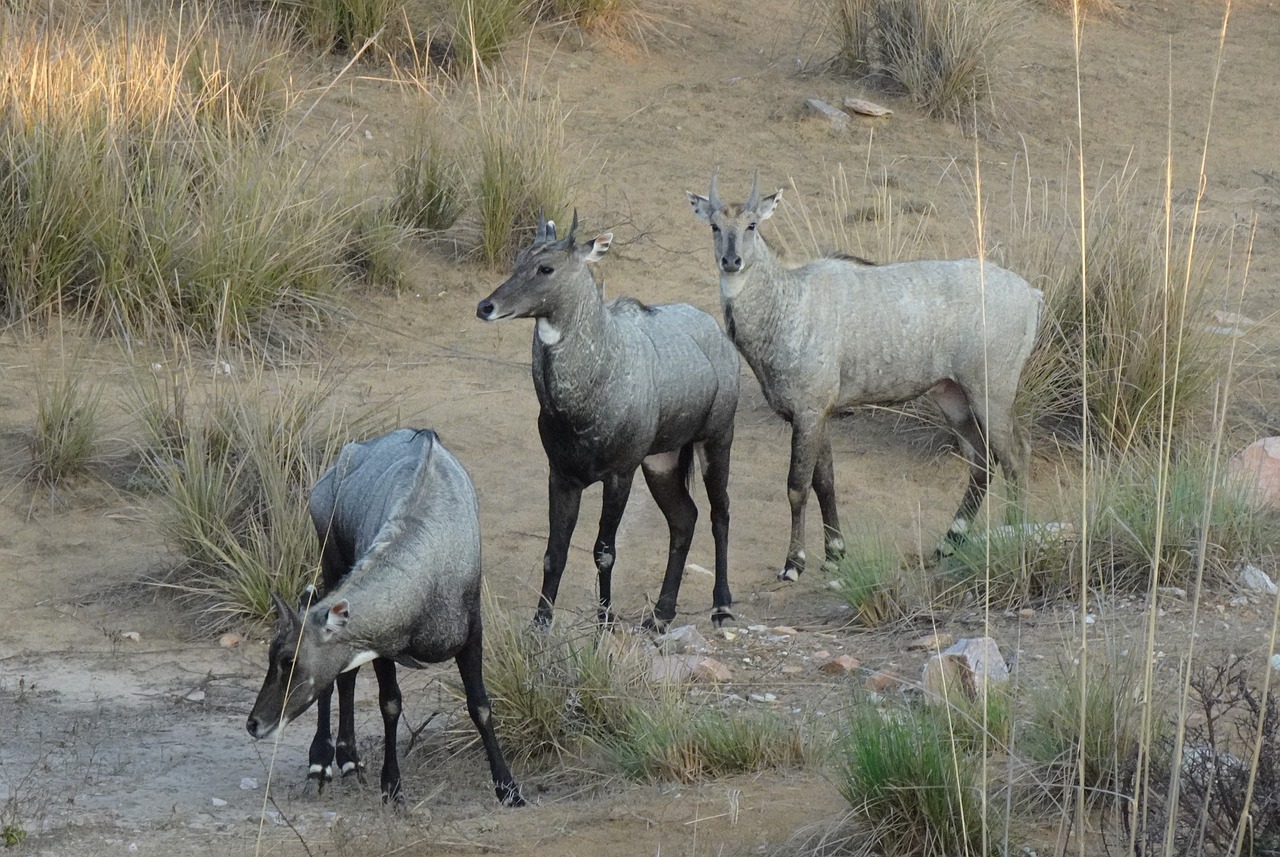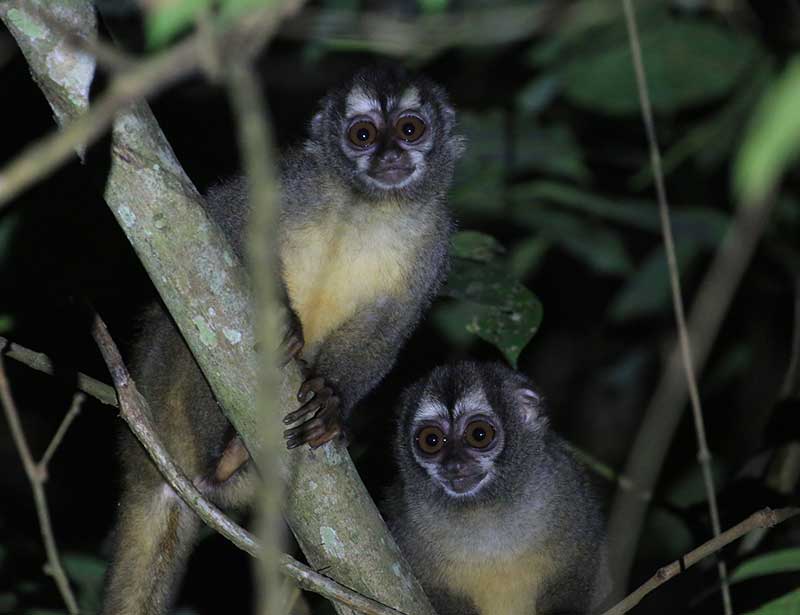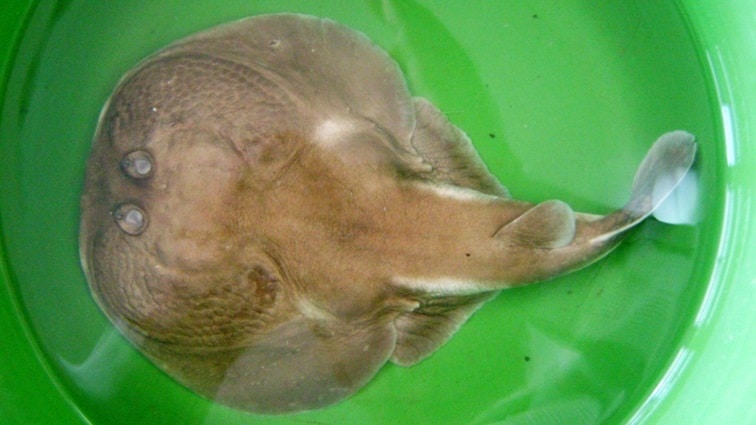Animals have a huge kingdom in the earth’s living species. They are classified into various classes and families, depending on their distinctive features, food habits, limbs, walking style, and many other crucial features.
If you want to read about the animals beginning with N to share with your kids, you are in the right place. We have curated this list for you, so if you are interested in exploring that animal beginning with N, keep reading.
In this post, we have covered 40 animal names beginning with N, which you will love sharing with your kids. We have covered animals from various classes, such as Nilgai, Nightjar, Nightingale, Natterjack, Nile Crocodile, Nile Perch, Needlefish, Norway Rats, Newfypoos, Nudibranch, Newts, and many more from various classes, families with a brief introduction from their class to scientific names and few features and unique facts about them.
1. Nilgai

Nilgai is a Mammal of the animal kingdom commonly known as the Blue Cow. In scientific terms, this animal beginning with the alphabet N is known as the Boselaphus Tragocamelus.
Nilgai is commonly found in the habitats of farms or dry lands in Asia and North America. Nilgai is the oldest Antelopespecies. During the 1920s and 1930s, many of the Nilgais were taken to Texas from Asia for hunting. In some parts of Asia, like India, they are found in large amounts that people often consider pests in the farmland. Nilgais conservative is of the least concern as most people consider them sacred and don’t kill them.
2. Nabarlek

The Nabarlek is also known as Petrogale Concinna in scientific terms. The animal class of this tiny animal is Mammal. This species is from the endangered category and is found in the natives of Australia, and the estimated mature individual population is approximately 5000 to 10000. They are also known as Little Rock Wallaby.
Nabarleks have sharp teeth like sharks, and their molars keep emerging from the backside. Nabarlek animals are closer to the kangaroos in resemblance and closeness, and they are Herbivorous to food.
3. Nightjar

These are the creatures of the Aves class from the Animal kingdom and are known by the Scientific names of Eurostopodus Argues and Caprimulgus Ruficollis.
Nightjars have larger eyes and flat heads, commonly found in Asia, Africa, and most American parties except the Western zone. Nightjars are insectivores, having a wingspan of twenty inches. In resemblance and appearance, they are like Birds, but they live on the ground instead of in nests. Nightjars can live up to 12 years and hide in hiding spots against tree bark.
4. Narwhal Animal Beginning With N

This Mammal class from the Animal kingdom is often found in colder areas and zones like the Arctic and got the famous name of Sea Unicorn because of its massive tusk. In scientific terms, the Narwhal is also known as Monodon Monocerous.
These animals roam and hang in sea areas and cold zones like the Northern Atlantic and the Arctic Oceans. The lifespan of these animals, beginning with N, is estimated up to the gift years, and they are heavier and can weigh from 800 kg to 1600kg.
5. Nightingale

Nightingale is the small songbird of Aves class from the Animal Kingdom. These creatures are mostly found in Asia, Africa, Europe, and Eurasia. In scientific terms, Nightingale is known as the Luscinia.
These creatures got their name, Nightingale, because of the associated words with the Night Songs. The male Nightingale sings at night and has the kingdom’s most sophisticated and complex verbal sounds. They can sing from 180 to 260 song variations. Their life span is smaller, and they live up to one to three years.
6. Nene

This animal type is a bird with the Scientific name Branta sandvicensis. Nene is mostly found in the regions of Hawaii island. They got this special tag of the Official bird of Hawaii. And their species is almost threatened. This species is a Duck breed; in resemblance, it is much closer to the Canada goose. The major difference between Goose and Nene is that Nene doesn’t have fully webbed feet and has a striped neck instead of a completely black one.
7. Natterjack

A Natterjack resembles a toad in many ways and got the scientific name of Epidalea Calamita. This creature of the animal kingdom is from the class Amphibia. Natterjacks are often habitats of the Europe region in the dunes and with the marshes habitat.
The fun fact about This animal beginning with N is that it can lay up to seven thousand five hundred eggs. Natterjacks are carnivores and prey during the nighttime. Woodlice, spiders, and worms are part of their food. Their estimated lifespan is somewhere between ten to fifteen years.
8. Nile Crocodile

These crocodiles come under the Reptilia class of Animal Kingdom and are known by the Scientific name – Crocodylus Niloticus. Poaching is the biggest threat to Nile crocodiles. This species is native to Africa, and being carnivorous reptiles, they survive on preying Fishes, Zebra, Hippos, Birds, and other species of crocodiles.
The awesome unique feature of the Nile crocodile, apart from its large size, is that the male Nile Crocodile stays with the female Nile crocodile after laying eggs to protect them. Also, the female Nile Crocodile has a special pouch to protect her younger ones in her throat. Nile Crocodiles have a lifespan of 45 years.
9. Nighthawk

This is a bird species known by the scientific name – Chordeiles Minor. They have several species and are commonly found in North and South America.
The amazing fact about the Nightawk is that they pretend their wings are broken whenever a predator approaches them or their nesting location. Nighthawk is a Nocturnal bird, having short legs, big eyes, and pointed wings. Their visual area is higher because of their great night vision, so they got the name Night Awk.
10. Nebelung

These creatures from the animal kingdom fall under the class of Mammals and are known as Felis Catus in scientific terms. The Nebelung means Creatures of the Mist by the Germans. In appearance, Nebelung animals are like cats who have long hair. Their population and conservation status are the least concern, and they are the habitat of America, Russia, Canada, and Europe. This species is fond of indoors, and so many people keep them in their homes and don’t like the change in their lifestyle.
11. Nile Perch

These fish-like creatures are also known as African Snook. They are from the Actinopterygii class from Animal Kingdom. The Scientific name of Lates Niloticus is Nile Perch. This species is found in the zones of Africa in Ponds, rivers, and lakes and has the biggest threat of fishing that might lead to its extinction.
The weirdest fact about Nile Perch is that they often eat their species members. Nile perch’s unique features are silver-colored scales with blue or green hints. Their pupils also have yellow outlines around them.
12. Night Monkey

These monkeys are known as Simia Trivirgata in Scientific terms. Night Monkeys are known as Owl Monkeys and have monochromatic vision abilities. They have several species; some are endangered, and some are vulnerable. A few of their species are also of least concern in the conservation status.
In most species, the caregiver is a female. Still, the awesome fact about the Night Monkeys is that the Male member is the primary caregiver and caretaker.
13. Needlefish

This fish species is from the Actinopterygii class of Animals and got the scientific name Platybelone Argalus. Needlefish are found mostly in Asia, Africa, Oceania, Northern, Southern, and Central America. This species got the name Needlefish because of their long serrated beak and is known as Carfish and Long Toms. These fishes have sixty species and have various colors.
This species lives without a stomach; guess how hard it might be for them to digest food.
14. Neanderthal

The Neanderthal fell in the Mammals class of the animal kingdom and got the scientific name – Homo Sapiens Neanderthalensis. These animals have roamed Asia and Europe regions for around lakhs of years. This Hominiade family is extinct now; only fossils were discovered in 1829.
Regarding the resemblance, these are considered the oldest extinct relatives of humans. And the newer version of this family is considered Humans. Neanderthal scored top in the food chain, consuming almost everything from plants to animals.
15. Nandu

Nandu is a Bird from the Animal kingdom that can’t fly. The resemblance and appearance are much closer to Ostrich and Emu. This bird weighs around fifty pounds and is commonly native to Brazil and Argentina. These birds have strong legs that run quickly from danger zones and balance themselves with their large flightless wings to change their direction. The interesting fact about these creatures is that the female nandus collectively lay their eggs in the nest they create under the ground. These nests are so larger that they can collectively hold around 50 eggs.
16. Newfoundland

These animals are Mammals that are a species of dog. Canis Lupus is their Scientific name. Newfoundland species animals are mostly found in the North American regions.
The fun fact about Newfoundland is that these animals have a water-resistant coating and web-like feet, making them excellent swimmers. These are Omnivorous and have a lifespan of 8 to 10 years only. These dogs live in the group often. As pets, they are kids and family-friendly dogs who are intelligent. It’s hard to train them like other dog breeds.
17. Norway Rat

These rats also come under the Mammals class and are known by the Scientific name of Rattus Norvegicus. The animal were native habitats of China but have reached wide areas because of traveling with humans. The Norway Rats are now found in Asia, Africa, Europe, Eurasia, Oceania, And North, South and Central America.
They can be observed in the homes and fields. The interesting fact about these rats is that they are color-blind and have poor vision. The size of the Norway rats is 8-10 inches, and their tail is often 7-10 inches.
18. Night Fish

This ambush predator is a six-inch fish found in freshwater habitats in Southwestern Australia. They survive in lakes, ponds, and coastal streams and hunt at night.
The interesting fact about the night fish is that Small fish, aquatic insects, and crayfish are their prey. During the daytime, they are inactive and hide under the stone vegetation. These Fishes have a maximum lifespan of six years.
19. Newfypoos

These Mammal dogs are also known by the scientific name Canis Lupus. They are found in North American regions, and many people also keep them as pets. They are lovable, friendly, kind, and intelligent. The fun fact about the Newfypoo is that these dogs have a thick oily coat on their skin that is harder to groom.
The lifespan of Newfypoo is only ten to twelve years. Newfypoo doesn’t love sports, but their exercise and stretching needs are higher. These dog get high anxiety if separated from their group or pet owner.
20. Nudibranch

These animals, beginning with the letter n, are from the Gastropods class and known by the scientific name of Nudibranchia. They live in plenty of amounts as their conservation status is the least of concern. Nudibranchs live in the Oceans where the water is brackish or salty and live individually instead of in groups. So these also got the common name of Sea Slug.
The weirdest and most fun fact about the Nudibranch is that they save themselves from predators. They use toxins from their prey. When it comes to appearance, they have multiple forms and are bright in color.
21. Napu

Napu is a small animal whose size resembles a rabbit. However, this animal looks like a small deer and a large mouse. Their body is round, their head is in the triangular, and their legs are longer and thinner, like a deer.
This animal, beginning with N, is also commonly known as the Malay mouse deer. They are natives of Sri Lanka, Thailand, Indochina, the Malayan Peninsula, etc. Napu has got the name Dubbed Living Fossils.
22. Newt

Newt animals are of the Amphibia class. They are found in Asia, Europe, Eurasia, and North America, near the banks of rivers and temperate forest zones. Newts are omnivores who prefer to live alone and survive on insects, worms, and water snails.
The interesting fact about the Newts is that they can regrow damaged or lost limbs like eyes, legs, intestines, and other missing organs. They have scale-type skin and a lifespan of two to fifteen years. Another interesting thing about Newt is that they can gain a speed of up to 30 mph.
23. Numbat

Numbat is a Mammal known by the scientific name of Myrmecobius Fasciatus. This species is endangered and mostly found in the Oceania zones. The saddest fact about the Numbat species is that they are left in the amount of some thousands only in the wild. These creatures are commonly known by the names Marsupial Anteater and Banded Anteater.
These animals, beginning with n, are omnivores; their favorite food is Termites. They can swallow the termites without chewing. They are habitats of grassland and woodland of Eucalyptus in Australian regions. These furry animals have a lifespan of four to eight years only and can gain a speed of up to 15 mph.
24. Noddy

These animals are the type of birds that belong to the Laridae family of the Animal kingdom. These are found in Africa, Eurasia, and North & South America. These are the seabirds of medium size that are habitants of Short trees, shrubs, and cliff nests.
These have five species and are tropical with forked tails. The distinctive features of Noddies are that they have white caps and black plumage, depending on their species, which are mostly found in the islands of the Galapagos.
25. Night Snake

These snakes are of the Reptilia class of Animals and are known by the scientific name of Hypsiglena Torquata. Night snakes are found in North America and are the habitats of forest, desert, rocky, or meadow areas. Night snakes have 17 species, surviving on frogs, insects, and lizards.
These snakes only grow to sixteen inches, so people often confuse them with young rattlesnakes. These snakes are less aggressive yet venomous. The lifespan of the night snakes is up to twelve years.
26. Nubian Goat

These Mammal goats have the scientific name – Capra Aegagrus Hircus. These are mostly found in the regions of North America. They live in the herd, and their population size is very large that is estimated at around 924 million. Nubian Goats are herbivores and can survive up to 12 years in the wild and up to 15 years in captivity.
The interesting fact about the Nubian goat is that they are proud and relatively large. People keep them as pet and dairy goats in most Egypt and Indian regions.
27. Noctule

This animal is a type of bat whose conservation status is the least of concern. They are found in North Africa, Asia, and Europe. The interesting fact about the noctule bats is that they are tree dwellers and don’t have a specific home.
They live in holes created by Woodpeckers. Noctules are the largest bats in the UK region. To conserve their energy during the winter session, many Mother bats hibernate. Noctules survive on some flying insects and moths.
28. Nurse Shark

These Sharks resemble a lot of Fishes and are from the Chondrichthyes class of the Animal kingdom. These fishes have the scientific name – Ginglymostoma Cirratum. They are found in the Oceans, and their species is nearly threatened because of predators like Bull sharks, Tiger sharks, and Humans.
Nurse sharks are mostly found in the water bodies of Central America. Their skin is smooth, and they weigh from 90 to 150 kg. Nurse Shark can gain a speed of up to 25 mph and has a lifespan of 20 to 25 years.
29. Nuthatch

Nuthatch is from the Aves animal kingdom class. This species is endangered and commonly found in Asia, Africa, Eurasia, Europe, Oceania, and North & Central parts of America.
The interesting fact about the Nuthatch is that they love spending most of their time turning their bodies upside down. They keep hopping up and down to and on the trees. Their legs are shorter, and their beak is long and pointed. These Omnivores survive on Snails and insects. And often become the prey of Squirrels, hawks, and owls. So, they often line the pairs or colonies.
30. Nunlet

This is a type of bird from the Bucconiadae family and a Puffbird species. These creatures are the inhabitants of Tropical and subtropical areas. Nunlents are commonly found in Colombia, Ecuador, and Peru.
These puffbirds don’t migrate; you can find them near the rivers of habitats and regions mentioned above. The interesting and distinctive feature of Nunlets is that they have bolder visuals. When it is to appearance, they have gray cheeks and necks and chestnut caps.
31. Nautilus

This creature from the animal kingdom is from the Cephalopoda class and got the scientific name – Nautilus Pompilius. The fun fact about the nautilus is that these fossils have evolved a lot before and over 500 million years ago.
This animal began with N and is named because of the Sailor word from the Greek dictionary. Regarding the resemblance, nautilus is much closer to creatures like Cuttlefish, Squid, and Octopus. These creatures can dive deeper and survive in the depths of water bodies.
32. Nuralagus

According to the records, Nuralagus is the biggest Rabbit species now. They are omnivorous Mammals who are also known as the Minorcan Giant Rabbit. This gian Rabbit is now extinct and used to be much larger than modern-day Rabbits.
The fossils of these animals, beginning with N, were found on the island of Minorca in the red limestone rocks of the Northwestern zone. Nuralagus had smaller eyes, ears, and skulls than modern-day Rabbits.
33. Numbray

This creature is a type of fish commonly known as the Sleeper Ray. Numbrays are weak swimmers and habitants of the muddy estuaries and natives of Australia. These fishes prey on smaller fish and small aquatic mammals.
The interesting and unique fact about the Numbray is that they can send shocks of 200 V, as are the species of Electric Ray. The Numbrays also got the title of Coffin Ray. Numbrasy can expand their mouths to larger sizes and eat Penguins
34. Naked Mole Rat

Sand Puppy is the common name of the naked Mole Rat. These mole rats are also known as Heterocephalus Glaber in scientific terms. The class of this tiny animal is a mammal.
These naked mole rats are also considered the weirdest creatures in the animal kingdom. They can transform into as many possible forms that are almost weird for the normal human eye. The amazing fun fact about the Naked Mole rats is that they do not get cancer. They are Omnivores and survive on the roots, rhizomes, tubers, and bulbs, and are native to the Horn of Africa.
35. Nutria

These animals are aggressive yet herbivores and survive on aquatic vegetation. Myocastor Coypus is the scientific name of a Nutria animal that belongs to the class of Mammals. These are natives of Africa and Europe and are also found in the northern and Southern parts of America. This invasive species is social and stays in the Colony’s behavior.
The unique feature of Nutria species, apart from their longer Orange colored front teeth, is that female Nutria can give birth to up to 200 babies. These animals live up to three to ten years only.
36. Noolbenger

This creature is a Nocturnal Mammal of the animal kingdom. Noolbenger is a Marsupial that is commonly found in the regions of Australia. Noolbenger is considered the Honey Possum, as they love sucking and consuming the Australian Honeysuckle.
These tiny mammals act like pollinators for plants. Noolbengers survive on the nectar and pollen and feed primarily during the nighttime. The amazing fact about the Noolbenger is that the male counterparts are two-thirds of their females. This difference in size is because female Noolbenger has a pouch in their body to carry their younger ones.
37. Nyala Animals Beginning With Letter N

Nyala is a Shy Mammal of the Animal kingdom that resembles the Calf. This species is known by the Scientific name Tragelaphus Angasii. They are native to Sothern Africa, and their habitat is almost extinct.
Poaching is the biggest threat to these animals, apart from the danger of predators like humans, Leopards, Hyenas, and Lions. The fun fact about the Nyala species is that their higher pitch sounds like the dog barking when they create the call. Nyala have a lifespan of 18.5 years.
38. Night Heron

This species is also commonly known as Heron. These are from the Aves class of the animal kingdom and are known by the scientific name of Nycticorax Nycticorax. They are mostly found in Asia, Africa, Europe, and Northern and Southern American areas. Night Heron Survives on prey like frogs, fish, and insects.
The weirdest and most interesting fact about the Night herons is that they vomit their stomach contents when they feel threatened by predators or other circumstances. Night Herons’ unique feature is their crown of feathers,
39. Norwegian Forest

These creatures are a breed of cats and got the special title of the National Cat of Norway. This animal, beginning with N, is friendly and domestic. They are habitants of the cold environment and are found in the regions of Norway.
The interesting and most distinctive feature of the Norwegian Forest cats is that they have long and thick silver coat fur on their skin to protect them from external harsh weather conditions.
40. Nutcracker

These creatures are a bird with three species in the animal kingdom. They are habitats of rocky mountains found in the regions of Canada and the USA. The special feature about the Nutcrackers is that they can tear pine cones.
During the summer, they hide seeds in them and remember the location and exact area where they have hidden them so they can use them for the winter season to save themselves.
Final Thoughts
Animals have a huge kingdom; many more animals begin with N. Kids are equally excited while learning about them as much as you are excited to explore the Animal kingdom and learn about more species. In this post, we have covered 40 animals that start with N. You and your kid will love to read and explore more about these animals.
We have covered various types of species, classes, and families of mammals, Aves, Reptilia, Cephalopoda, Amphibia, Gastropods, and more to help you explore various species of animals along with their amazing, interesting facts and distinctive features.
If you are looking for more ways and interesting facts to make your and your kid’s life better and more interesting, sign up and get our best recommendations sent to your inbox.


















